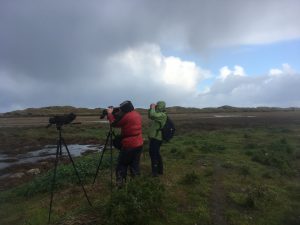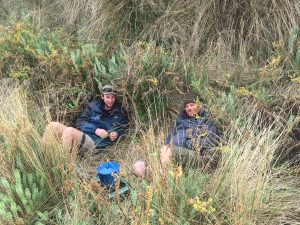Finishing up the 2018 Orange-bellied Parrot survey season in the South West
There may have been no OBPs confirmed, but we’ve still had a good Parrot season in 2018!
With a slight increase in regular volunteers and more feedback from the general public we have been very busy over the last few months. Although we unfortunately did not manage to get a confirmed OBP sighting for the SW-Victoria region, several potential sightings kept us on our toes.
I would also like to thank all the volunteers who participated during this seasons winter surveys. The weather wasn’t very kind to us this year, but the enthusiasm of our dedicated volunteers who spent hours in cold, wet and stormy conditions was really fantastic. A special thanks to John Hargreaves, who has spent over 200 hours in the field helping NGT chasing Neophema species since early May. Well done John!
Last weekend was our last weekend of the official winter surveys, and SW-Vic coastal wetlands are still showing very high water levels and hence limited parrot habitat is currently available. It was therefore not surprising that we did not observe any Neophema species. However, the bird world provided us with plenty to enjoy during our final picnic lunch at the beach. High numbers of shorebirds kept us entertained including some of the rare Curlew Sandpipers who are starting to arrive from their breeding grounds in Siberia.
For now, let’s hope that most of the remaining wild OBPs have a save journey back to their breeding grounds in Tasmania and a successful breeding season ahead of them. In the meantime we are looking forward to next year’s season, and hopefully a rare glimpse of our increasingly elusive OBPs…
The OBP winter monitoring program in south west Victoria is undertaken by Nature Glenelg Trust in close partnership with BirdLife Australia and the Department of Environment, Land, Water and Planning. The program was funded by the Victorian Government Biodiversity On-ground Actions program.


